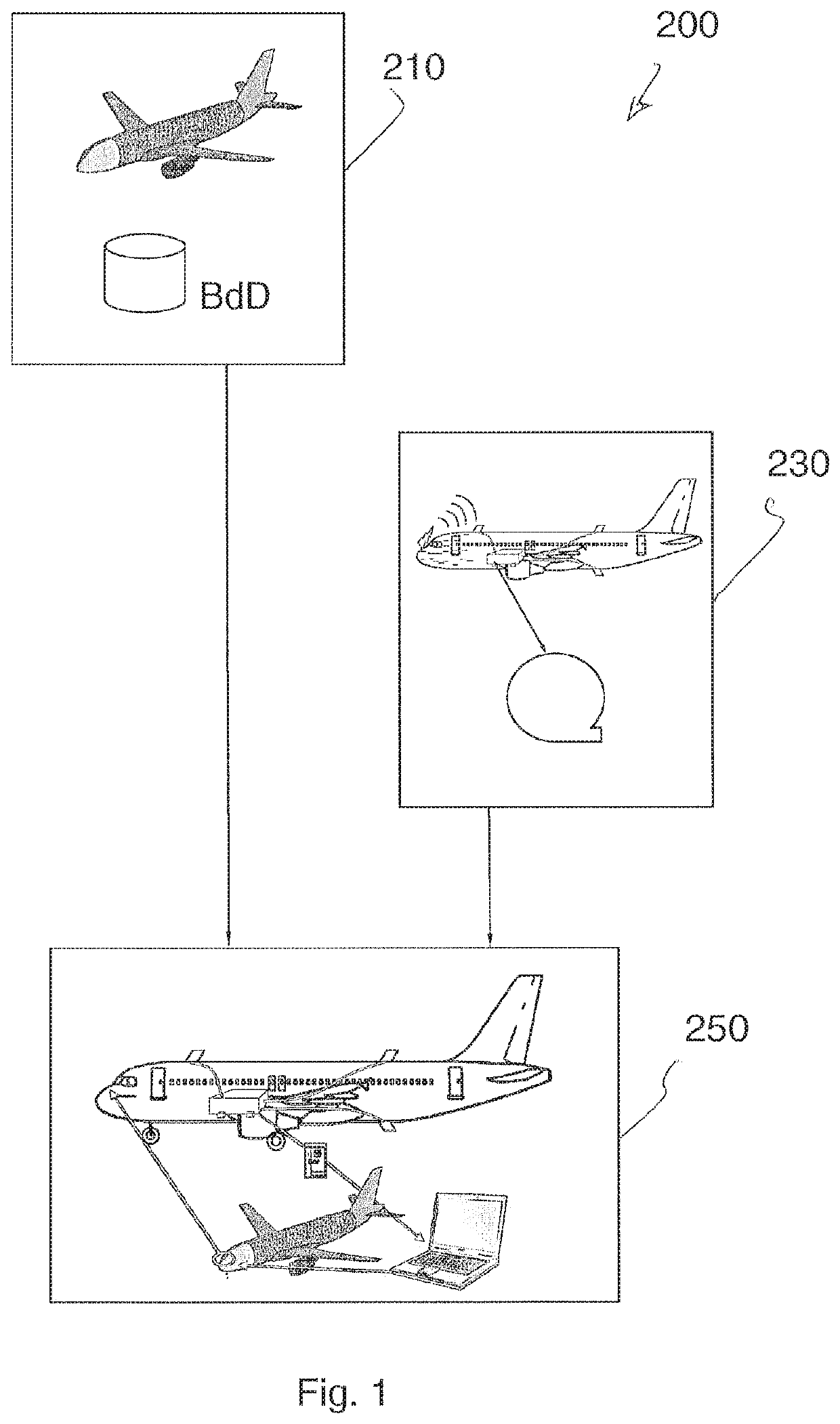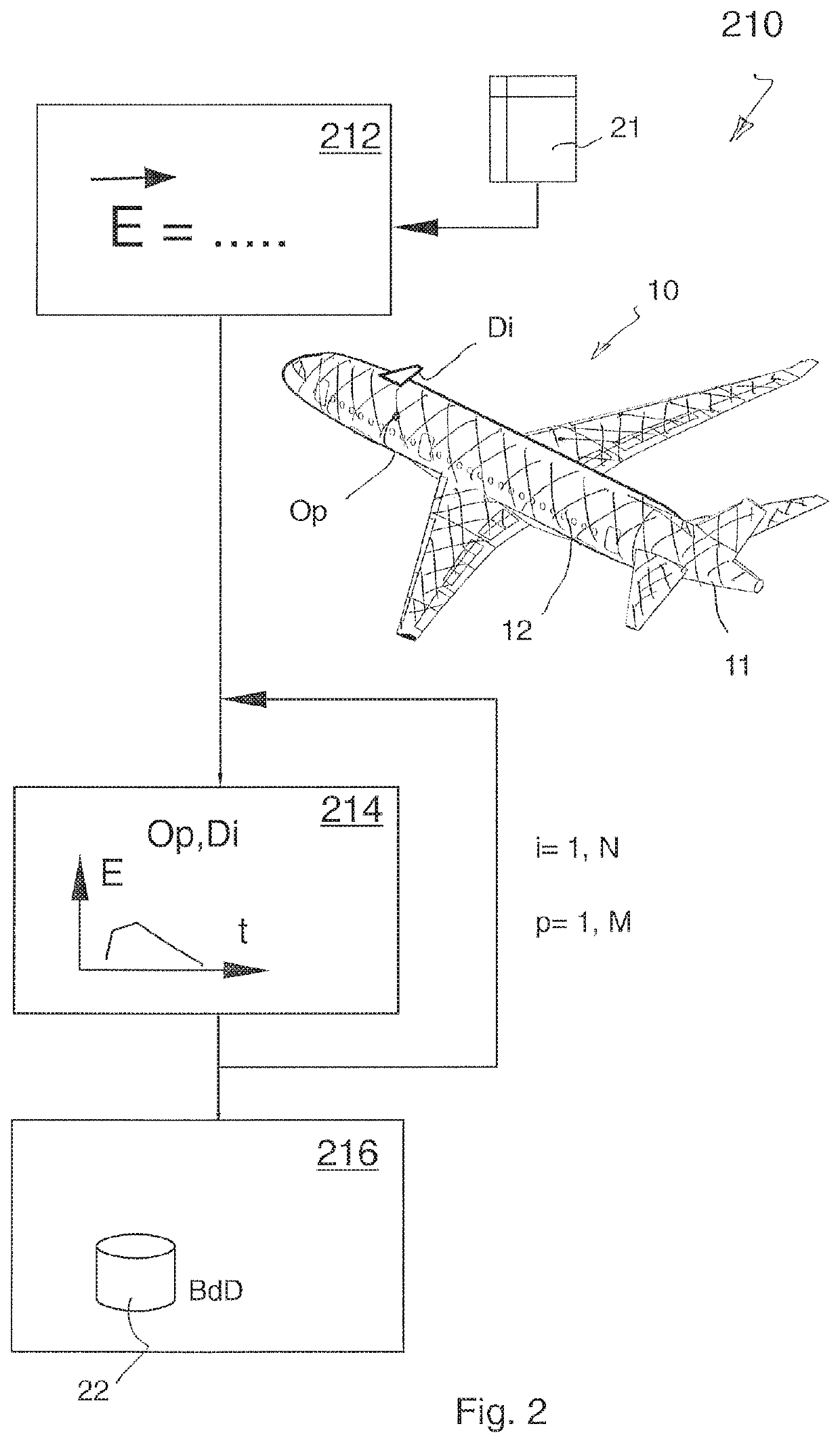Method and assembly for locating electrostatic discharges on aircraft in flight
a technology for electrostatic discharge and aircraft, applied in the field of aircraft and electrostatic discharge phenomena, can solve the problems of electrostatic discharge, electrical charge accumulation, and interference with the operation of some aircraft equipment by intense electromagnetic radiation, and achieve the effect of rapid investigation
- Summary
- Abstract
- Description
- Claims
- Application Information
AI Technical Summary
Benefits of technology
Problems solved by technology
Method used
Image
Examples
Embodiment Construction
[0064]In the figures, similar elements are identified by identical references.
[0065]In the various views preference has been given to the illustrative side of the method and of the system implementing the method and the various elements represented are not to scale.
[0066]The phenomena whereby electrical charges accumulate on parts of an aircraft and establish between different parts of the structure potential differences or local reinforcements of the electric field causing electrostatic discharges are well known and will not be described in detail here.
[0067]The charges appear on the exterior of the aircraft, under certain flight conditions, by virtue of the triboelectric effect of the friction of particles present in the air on the structure of the aircraft, and accumulate in zones, when they are not evacuated naturally, until the potential differences of the differently charged parts are sufficient to produce an electrostatic discharge.
[0068]Electrostatic discharges can also occu...
PUM
 Login to View More
Login to View More Abstract
Description
Claims
Application Information
 Login to View More
Login to View More - R&D
- Intellectual Property
- Life Sciences
- Materials
- Tech Scout
- Unparalleled Data Quality
- Higher Quality Content
- 60% Fewer Hallucinations
Browse by: Latest US Patents, China's latest patents, Technical Efficacy Thesaurus, Application Domain, Technology Topic, Popular Technical Reports.
© 2025 PatSnap. All rights reserved.Legal|Privacy policy|Modern Slavery Act Transparency Statement|Sitemap|About US| Contact US: help@patsnap.com



